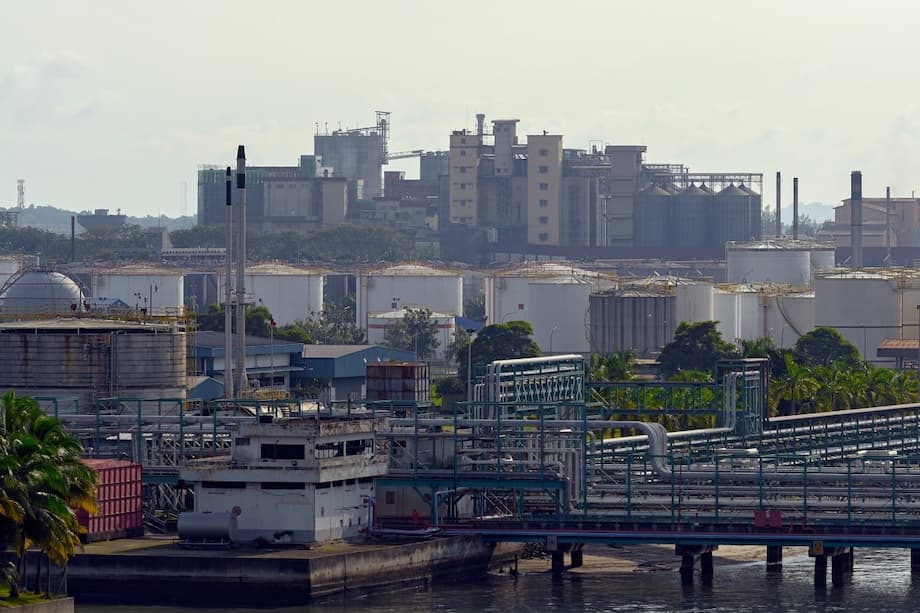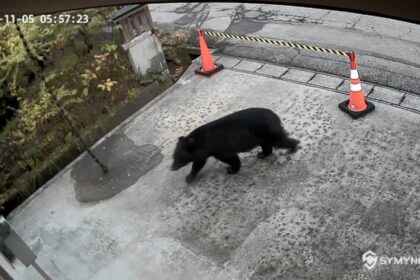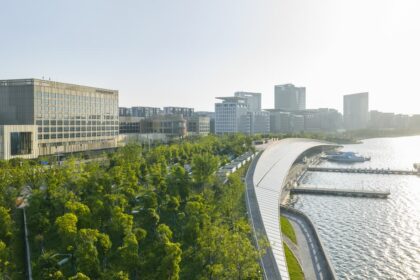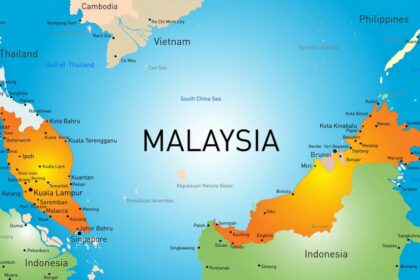Johor tremors end the myth of zero risk
A rare week of earthquakes in Johor has jolted Malaysia’s long-held assumption of being beyond seismic danger. Between August 24 and 31, the Malaysian Meteorological Department (MetMalaysia) recorded seven tremors, including a magnitude 4.1 earthquake centered near Segamat in northern Johor. Weaker shocks were felt in Yong Peng, Kluang and Batu Pahat. Local authorities reported hairline cracks in buildings and fissures in the ground in scattered areas. No tsunami threat was issued, and monitoring continues.
- Johor tremors end the myth of zero risk
- What the Johor quakes revealed about local faults
- How strong are Malaysia’s building codes
- A push to update standards and assessments
- Protecting critical infrastructure first
- Mapping and monitoring the risk
- Landslides, slopes and dams after earthquakes
- Regional lens, with Singapore watching
- What residents and building owners can do now
- Key Points
Malaysia sits outside the Pacific Ring of Fire, which has led many to view the peninsula as a safe zone. That view is shifting. Sabah has a track record of stronger earthquakes, including the 2015 Ranau event that damaged dozens of buildings. Peninsular Malaysia has logged smaller quakes over decades with epicenters reported around Bukit Tinggi, Kuala Pilah, Kenyir, Manjung and Temenggor. Distant earthquakes in Sumatra and the Philippines can also send tremors across the region. Engineers and geologists say the recent Johor cluster shows local faults can awaken and that planning must assume a low, but real, seismic risk.
Nor Shahidah Mohd Nazer, an engineering geology and soil mechanics expert at Universiti Kebangsaan Malaysia, said the latest activity should trigger a policy shift. She urged targeted upgrades where hazards are higher and a focus on essential lifelines.
“We can’t predict earthquakes, but we can prepare for their possibility based on both historical records and current data.”
What the Johor quakes revealed about local faults
Geoscientists point to renewed movement along the Mersing fault as the likely trigger of the Segamat quake sequence. A 4.1 mainshock on August 24 was followed by aftershocks of 2.8 and 3.2. Researchers at Universiti Teknologi Malaysia say this pattern signals reactivation and warrants deeper mapping and instrumentation. Johor’s hard, ancient crust allows seismic energy to travel farther without losing strength, which explains why tremors were reported beyond the epicenter zone, including in Kluang, Muar and even parts of Melaka.
Malaysia has several known old fault lines, including the Bentong–Raub suture zone, Bukit Tinggi–Genting, Manjung–Sungai Perak, and the Kenyir area. Seismic engineering specialists caution that stress transfer from large earthquakes in Sumatra or the Philippines can nudge these legacy faults. Studies indicate a corridor between latitudes two and four degrees north, covering Klang, Kuala Lumpur, Seremban, Melaka, Muar, Batu Pahat, Segamat and Kluang, shows higher peak ground acceleration (PGA) values than other parts of the peninsula. Experts advocate updated national hazard maps in 2025 and microzonation in urban centers like Johor Bahru, Segamat, Kluang, the Klang Valley, Melaka, Seremban, Ipoh and Penang so that local soil conditions, which can amplify shaking, are captured in design parameters.
How strong are Malaysia’s building codes
Malaysia adopted earthquake-resistant design into mainstream practice after the 2015 Ranau quake. The Malaysian National Annex to Eurocode 8 (MS EN 1998-1), introduced in 2017, sets out how buildings should be designed for ground shaking. The Uniform Building By-Laws incorporate seismic provisions, but implementation depends on states gazetting these amendments. Engineering bodies say adoption remains uneven. For new projects, industry estimates place the added cost of complying with seismic provisions at roughly 5 to 15 percent of construction budgets, a range influenced by site conditions and building type. Retrofitting existing structures can be more complex and occasionally requires temporary evacuation of occupants.
What Eurocode 8 asks engineers to do
Eurocode 8 is built around life safety. It requires structures to resist lateral forces from earthquake shaking and to deform in a controlled way without collapsing. Engineers call this property ductility, the ability to bend rather than break. The code sets detailing rules so columns, beams and joints have the capacity to absorb energy. In many cases, engineers must run dynamic analysis to predict how a building will sway during quakes, and they must consider local soil effects because soft ground can amplify shaking compared to rock.
Malaysia’s national annex adapted parts of Eurocode 8 to local realities. Researchers noted the challenge of limited local seismic data, so they recommended a minimum hazard level to avoid designs that are too weak. They proposed a more practical way to classify sites using the site’s natural period, which better reflects how soils respond to shaking. Because many local engineers were new to ductile detailing, simplified tools were developed for reinforced concrete design under Ductility Class Medium (DCM). To improve analysis quality, a benchmarking method known as the Generalised Force Method was introduced to help validate dynamic models.
Enforcement and the older building stock
Many buildings constructed before 2015 followed British Standards and were sized for wind and notional lateral loads. Some of these structures have inherent lateral stiffness and can tolerate small tremors. The concern arises during stronger local shaking, where the lack of ductile detailing, soft first stories, and reinforced concrete frames infilled with brittle masonry can lead to damage patterns seen in moderate earthquakes worldwide. Retrofitting options include adding braced frames or shear walls, wrapping columns in fiber reinforced polymer or steel jackets, and tying floor diaphragms more effectively to vertical walls.
Public sector projects have improved compliance under federal directives. The picture is mixed in the private sector. The Construction Industry Development Board has stepped up audits using the Quality Assessment System in Construction (Qlassix), yet code enforcement still depends on local authorities. Upgrading older private buildings remains difficult where owners face cost constraints and legal hurdles, including redevelopment rules that require broad consent for demolition and replacement. Engineers recommend vulnerability screening of important buildings in higher-risk zones and a programmatic approach to retrofits.
A push to update standards and assessments
The Institute of Engineers Malaysia says the recent Johor tremors are a timely prompt to revise the national seismic design framework and align it with the new Second Generation Eurocode 8. IEM’s leadership notes that many older buildings, while not designed specifically for earthquakes, often possess lateral resistance from wind-focused design. That inherent strength helps for minor shaking. Risk rises when ground motion matches a building’s natural frequency. Structures in the 10 to 20 story range can be more sensitive to local tremors, while very tall towers may respond more to large distant events. Site conditions matter just as much as height. IEM argues for rapid citywide hazard assessments after a felt event to pinpoint potentially vulnerable buildings and prioritize inspections.
Government leaders have highlighted the resilience of newer towers. The Housing and Local Government Minister stated that high rises built since 2016 must meet stringent requirements and have been guided to resist strong shaking. All new government premises built after 2019 are required to be earthquake resistant. Engineers caution that earthquake magnitude is not the parameter used for design. What matters are ground accelerations and the design response spectrum at a site. Uniform Building By-Law changes and national annex updates can tighten consistency, but enforcement still rests with local authorities.
Protecting critical infrastructure first
Malaysian experts are aligned on priority-setting. Hospitals, schools, dams, major bridges and emergency facilities should receive top attention in any seismic upgrade program. These buildings must function during and after an event. That means robust detailing of structural frames, restraint of nonstructural components like suspended ceilings and piping, secure anchorage of generators and water tanks, and protection of emergency egress routes. Redundancy in load paths is key so that if one element fails, others share the load.
Design and retrofit techniques that work
For new landmark or essential buildings, base isolation and other isolator systems can reduce the shaking that reaches the structure by filtering out part of the ground motion. Supplemental damping devices, such as viscous or friction dampers, can dissipate energy and shorten shaking duration for the building. Retrofitting options range from column jacketing with fiber reinforced polymers or steel, to adding braced frames or shear walls that provide clear lateral strength. Detailing stair connections, bracing partition walls, and securing mechanical and electrical equipment limit damage and help buildings remain operational. For pipelines and tanks, flexible joints and anchorage avoid ruptures. Engineers estimate the added cost for seismic measures in new buildings at about 5 to 15 percent. Phased retrofits can spread costs and reduce disruption.
Mapping and monitoring the risk
Malaysia has strengthened monitoring in recent years. MetMalaysia operates a nationwide seismic network of sensors and coordinates with regional agencies. The Malaysian Tsunami Early Warning System can relay earthquake alerts to the public within minutes of detection when a tsunami is possible. The Department of Minerals and Geoscience has installed dozens of instruments to watch local faults, including the Kuala Lumpur Fault in Selangor. Authorities published seismic hazard maps for Peninsular Malaysia, Sabah and Sarawak in 2019 to guide design and disaster planning.
Seismologists recommend updating these maps with 2025 datasets to reflect both Sumatra sources and local intraplate faults. Microzonation in dense cities like the Klang Valley, Johor Bahru and Penang would refine the understanding of soil amplification neighborhood by neighborhood. That detail feeds the peak ground acceleration values used by engineers, helping ensure new projects and retrofits match the actual hazard on site. Better data also supports building reinspection priorities and emergency response planning.
Landslides, slopes and dams after earthquakes
Even a moderate earthquake can destabilize slopes, especially in highland developments. Geotechnical experts warn that shaking can trigger soil slippage and rockfalls, and that heavy rain soon after a quake can worsen the risk. Local councils, dam operators and road authorities should step up inspections for cracks, bulging walls, ground settlement and blocked drains. Slope reinforcement, robust drainage, and retaining systems reduce failure risk. For critical reservoirs and hillside schools, frequent visual checks and instrumentation help catch movement early.
Regional lens, with Singapore watching
The regional ripple of the Johor tremors stopped short of causing issues in Singapore. The Building and Construction Authority reported that none of the tremor sensors installed on Singapore buildings were triggered, and that its buildings follow international codes adapted to local conditions. Agencies across the straits continue to track seismic developments and review safety frameworks. The episode underlines the value of cross-border data sharing and compatible design practices in a tightly connected region.
What residents and building owners can do now
Preparedness closes the last gap in safety. Community advocates say public awareness remains low, even as monitoring and professional standards have advanced. Simple steps reduce risk at home, at work and in schools. Building managers should review their safety plans and confirm that critical equipment is anchored. Owners of older properties in higher-risk corridors can speak with qualified engineers about screening and retrofit options.
- Practice Drop, Cover, Hold On during drills and teach it to children and staff.
- Secure tall furniture, water heaters and heavy equipment to walls or floors.
- Prepare an emergency kit with water, food, torchlight, batteries, medication and first aid.
- Know exit routes, do not use lifts during tremors, and identify outdoor assembly points.
- Check for new cracks in walls, columns and stairs after any felt event, and call professionals if in doubt.
- Review building documentation to confirm seismic provisions for post-2016 projects.
- For older buildings near mapped faults, consider rapid visual assessment by a structural engineer.
- Schools and workplaces should run evacuation drills and share safety information regularly.
- Local authorities can prioritize inspections for hospitals, schools, bridges and dams.
Key Points
- Seven tremors hit Johor between August 24 and 31, including a magnitude 4.1 near Segamat, with minor damage reported.
- Experts say the peninsula cannot be treated as a zero risk area, and they urge targeted upgrades where hazards are higher.
- Geologists link the Segamat sequence to reactivation of the Mersing fault, and they call for updated hazard maps and microzonation.
- Malaysia’s seismic code is the National Annex to Eurocode 8 (MS EN 1998-1), introduced in 2017 and embedded in the Uniform Building By-Laws.
- Adoption varies by state, and enforcement is uneven. Engineers estimate seismic measures add about 5 to 15 percent to new building costs.
- The engineering community seeks alignment with the Second Generation Eurocode 8 and recommends rapid citywide hazard assessments after felt events.
- Priority should go to critical infrastructure, with options like isolators, dampers, bracing and column jacketing for higher resilience.
- Monitoring has expanded, with nationwide seismic sensors, tsunami sirens and 2019 hazard maps that experts want updated with 2025 data.
- Shaking can raise landslide risks on slopes and at dams, prompting calls for tighter geotechnical inspections and drainage upgrades.
- Singapore reported no impact from the Johor quakes but continues to monitor. Public preparedness steps like Drop, Cover, Hold On and home safety checks are encouraged.












